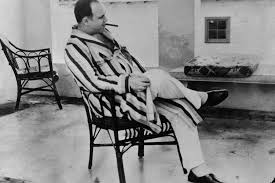The Life and Legacy of Al Capone: America’s Notorious Gangster

Introduction
Al Capone, often referred to as ‘Scarface’, remains one of the most infamous figures in American criminal history. Operating during the Prohibition era of the 1920s, Capone’s influence and notoriety have cemented his legacy as a symbol of organized crime in the United States. Understanding his life not only provides insight into the gang culture of the time but also reflects the socio-economic conditions that contributed to the rise of such criminal enterprises. With renewed interest in Capone due to recent documentaries and films, now is a pertinent time to revisit his impact and the era he dominated.
The Rise of Al Capone
Born in Brooklyn, New York in 1899 to immigrant parents, Al Capone dropped out of school at a young age to work in low-paying jobs. His entry into organized crime began in his teenage years when he became involved with a street gang. By the time he was in his twenties, Capone had moved to Chicago, where he worked for gang leader Johnny Torrio. After Torrio’s retirement, Capone assumed control and turned the Chicago Outfit into one of the most powerful crime syndicates in America.
Prohibition and Organized Crime
The enactment of the 18th Amendment in 1920, which prohibited the sale of alcoholic beverages, led to a surge in organized crime as gangsters sought to profit from illegal speakeasies and bootlegging operations. Capone took full advantage of this burgeoning opportunity, earning millions of dollars through his illegal activities. His empire extended beyond alcohol smuggling into gambling, prostitution, and other illicit businesses. His influence was so vast that at one point, it was estimated that around 80% of Chicago’s criminal activities were linked to him.
Law Enforcement and Downfall
Despite his notoriety, law enforcement struggled to bring Capone to justice due to corruption and the widespread fear he instilled in others. However, in 1931, after federal inquiries into his finances, Capone was ultimately charged with tax evasion—a strategy that proved successful where other methods had failed. He was sentenced to eleven years in prison, serving just over seven years before being released in 1939 due to deteriorating health. Capone spent his final years in Florida, where he died from complications related to syphilis in 1947.
Conclusion
Al Capone’s life encapsulates a critical period in American history, highlighting the effects of prohibition and the emergence of organized crime. His legacy continues to fascinate and serves as a reminder of America’s complex relationship with law, order, and the allure of the criminal underworld. As contemporary debates around crime and regulation persist, revisiting figures like Capone allows society to reflect on past mistakes and understand present challenges. The intrigue surrounding Al Capone remains, underscoring not only his impact on crime but also on popular culture, representing the dark underbelly of the American Dream.
